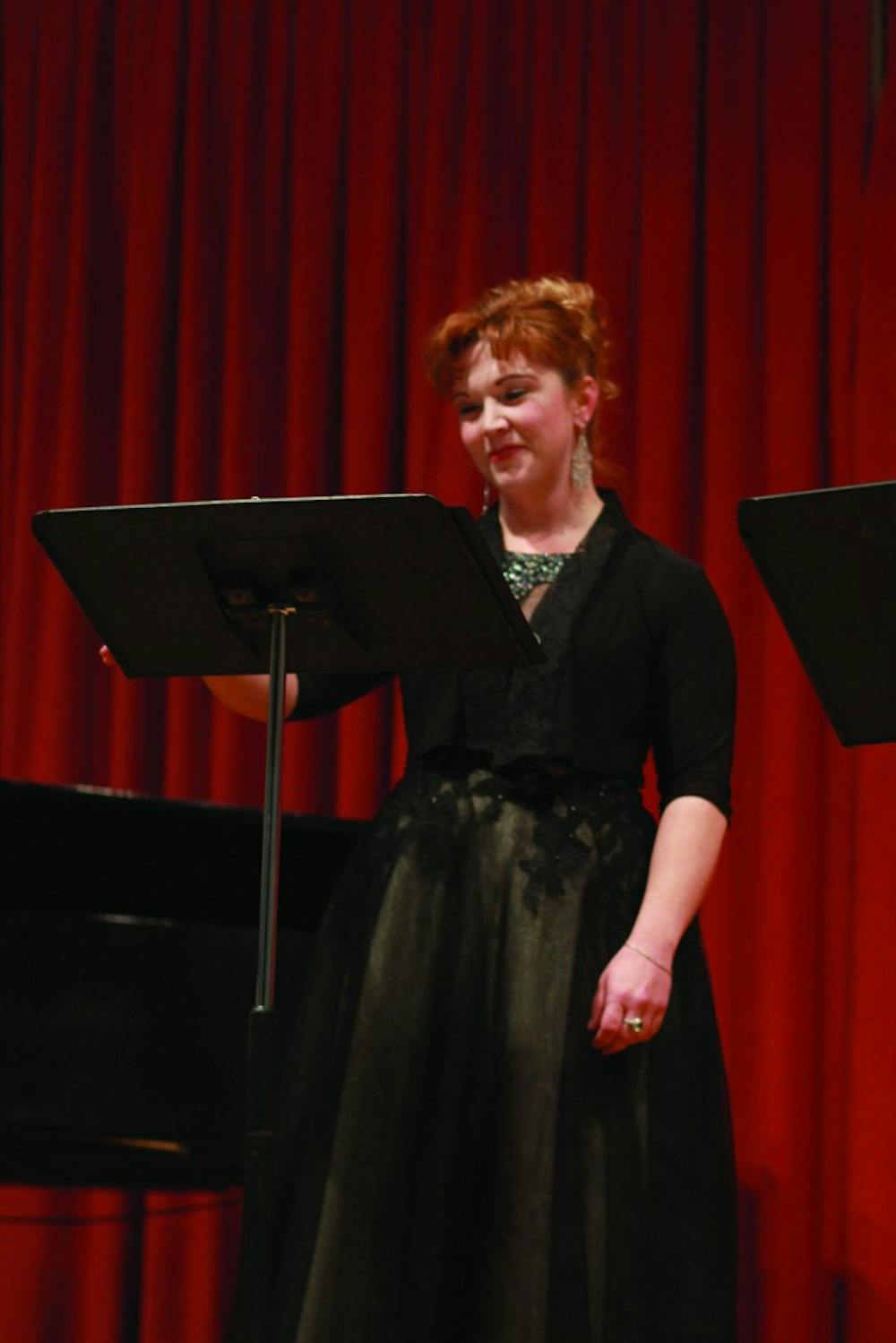The latest Shippensburg University Chapel Series joined soprano voice and trumpet in a faculty and guest artist recital in Old Main Chapel last Wednesday.
SU music professor Elizabeth Shoenfelt combined the beauty of her voice with the masterful craft of guest Louis Eckhardt’s trumpet playing during the recital. The two were backed by the baseline harmonies, known as the basso continuo, of Eckhardt’s colleague, Jonathan Sokasits.
Both Eckhardt and Sokasits are from Nebraska, where they teach at Hastings College. Eckhardt is an assistant professor of music, while Sokasits is a professor of piano.
This installment of the series saw the trio play music from various periods in history. They started with five of the seven movements of the Italian Baroque composition, “From Sette aria con tromba sola,” a five-movement piece that featured both Shoenfelt’s vocals and Eckhardt’s trumpet as solos.
Eckhardt’s cheery trumpet and Shoenfelt’s lofty soprano voice beautifully riffed off each other as if in conversation with one another. At times, one would cut out to provide the other the opportunity to show off their talent alone.
Both soloists performed with articulate precision, and it was obvious they followed the dynamic fluctuations written in the music. They balanced well where needed and showed off to the audience when an opening in the music allowed them to. Sokastis faithfully held the bassline of the music without overpowering the soloists.
The two took a more casual approach during the recital to explain parts of the music to the audience. Shoenfelt confessed that some of the music required a harpsichord, an instrument similar to a piano, but the group used a piano instead. She explained that while SU owns a Harpsichord, it would have been too difficult to transport it and then tune it. The piano filled in sufficiently and did not detract from the sound quality.
The group performed several other numbers, including “Legende,” composed by George Enescu; “Chansons de Ronsard,” a song written in French by Darius Milhaud; the Norwegian “Solveigs Song” by Edvard Grieg and “Advent” by Stanley Curtis. Each program came with translation guides the non-English songs. This allowed audience members to follow along with what Shoenfelt sang.
Shoenfelt described Norwegian as very easy to sing. She spent time in Norway and had access to native speakers to help her learn how to pronounce the words, which shone through as she performed the last song.
Eckhardt contributed to the last song by playing into the open lid of the piano onstage. Meanwhile, Sokastis held down his pedal. This contemporary technique created an echo sound Sokastis described as a halo. The sound waves of Eckhardt’s trumpet vibrating against the undampened strings within the piano created this circular ringing.
The next musical event to be held in the chapel will be the SU woodwind and string ensemble concert on Sunday March 31 at 3 p.m.




The Slate welcomes thoughtful discussion on all of our stories, but please keep comments civil and on-topic. Read our full guidelines here.